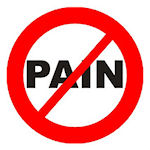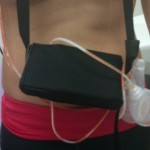One of the biggest concerns patients have with any surgery is the amount of pain they will have to endure afterwards. This is especially true in cases of Breast augmentation and Tummy tuck since the patient is undergoing elective surgery and wants the best experience possible.
Pain after surgery can slow down your recovery

Pain itself can have a negative impact following surgery. In fact, it’s the main cause for readmission to a hospital after cosmetic surgery.
When patients are in pain, they tend to breathe in short, shallow gasps which results in poor oxygen delivery to the tissues that, in turn, affects healing. In addition, when the lungs don’t fully expand, patients are more prone to additional complications such as pneumonia.
Pain pills help post operatively, but are not ideal
To prevent breathing issues following surgery, patients need pain relief. The traditional way is pain pills. The first problem with pills is that the effect of the pill goes up and down, so patients experience waves of pain. Secondly, too much of a dosage can depress the breathing urge, which can be very damaging to healing tissues. Thus a patient can get caught into a dangerous pattern cycle: a wave of pain, followed by taking more than the prescribed amount to control the pain because the pain pill takes time to take effect, followed by the danger of not breathing well enough due to the dosage taken.
Pain pills commonly cause nausea
Pain pills also have the unfortunate effect of causing nausea. If the patient is having pain, then takes a pain pill she may get pain relief, but a lot of nausea which means she’s not able to drink as many fluids as she needs to replenish the loss of fluids during surgery. This dehydration can also be dangerous. And it only worsens if the patient actually vomits, because she gets even more dehydrated and can’t get pain relief because she can’t keep the pills down.
What is the solution to the pain problem?
The solution? Pain pumps, not just pain pills!
Dr. Rodriguez, Baltimore Plastic Surgeon
Pain pumps. Not just pain pills. Unlike pain pills that affect your brain and your gut, the pain pump just pumps minute amounts of numbing medication to the operated area. This means your mind remains clear. You have no nausea so you eat well and remain well hydrated.
Pain pump is worn for 2-5 days

My patients usually wear a pain pump, like this one in the picture, for 2 to 5 days following surgery. In some cases, you may still need to take a pain pill but since it won’t be meant to relieve intense pain, the dosage will be smaller – which means less chance for nausea, too.
Here at Cosmeticsurg, when a patient comes in for drain removal after a breast augmentation, I can tell whether she’s wearing a pain pump from the minute she opens the door. To begin with, she actually grabs the door handle and gives it a push.

On the other hand, patients without the pain pump invariably have their escort open the door. The ones without a pain pump are usually in their pajamas and you can hear their slippers shuffling. You can tell they haven’t changed their clothes from bed and who can blame them? Post-op patients with the pain pump are usually dressed to go out and walk down the hall. Big difference!
Pain control is necessary for Breast augs and Tummy Tucks!
Over 95% of my Breast augmentation patients opt for the pain pump! Furthermore, patients who have undergone a Tummy tuck do even better. Without a pain pump, every single breath hurts because you use your abdominal muscles to breathe. In my Baltimore practice, I now require all patients to get the pain pump, which carries a small at cost charge. If you’re planning on having breast aug, or a tummy tuck, make sure you have the option to get a pain pump, too.
To learn more about pain pumps
You might also want to read Improving the cosmetic surgery experience: Pain pumps to control pain and nausea and watch me explain how pain pumps can dramatically reduce post operative pain and shorten your recover time in my video post, Pain pumps: Cosmetic surgery with minimal pain.
(originally published Jan 25, 2012)




Lori says:
Dr. Ricardo L Rodriguez says: